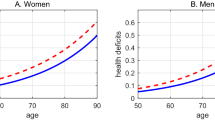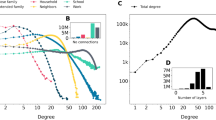Abstract
IN her lecture, delivered at University College, London, on February 25, Miss Elderton, of the Galton Laboratory, in dealing with the falling birth-rate, pointed out that the decrease is least acute in the mining districts; the engineering trades, which represent the best paid of the artisan class, come next; while textile districts coincide with residential districts in showing the biggest decrease; and she asks if there is some cause which operates to a special degree in certain classes.
This is a preview of subscription content, access via your institution
Access options
Subscribe to this journal
Receive 51 print issues and online access
$199.00 per year
only $3.90 per issue
Buy this article
- Purchase on Springer Link
- Instant access to full article PDF
Prices may be subject to local taxes which are calculated during checkout
Similar content being viewed by others
Author information
Authors and Affiliations
Rights and permissions
About this article
Cite this article
ANDERSON, J. The Falling Birth-rate. Nature 91, 84–85 (1913). https://doi.org/10.1038/091084d0
Issue Date:
DOI: https://doi.org/10.1038/091084d0
Comments
By submitting a comment you agree to abide by our Terms and Community Guidelines. If you find something abusive or that does not comply with our terms or guidelines please flag it as inappropriate.



